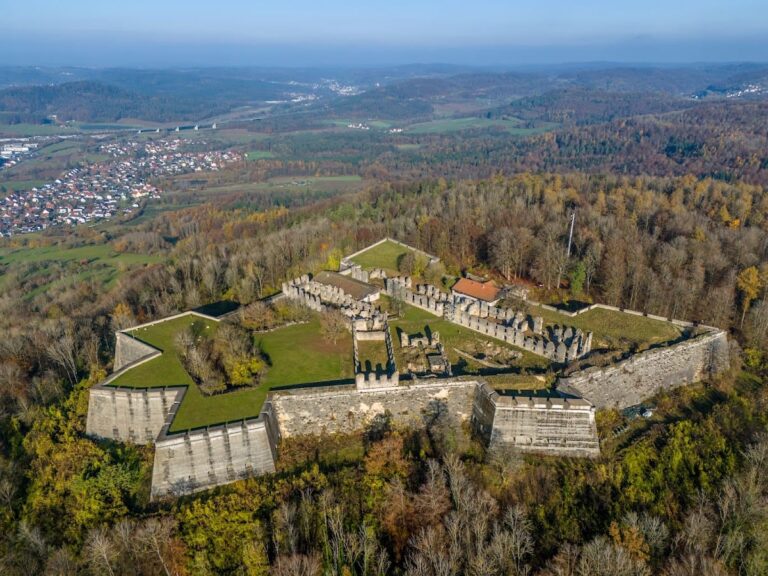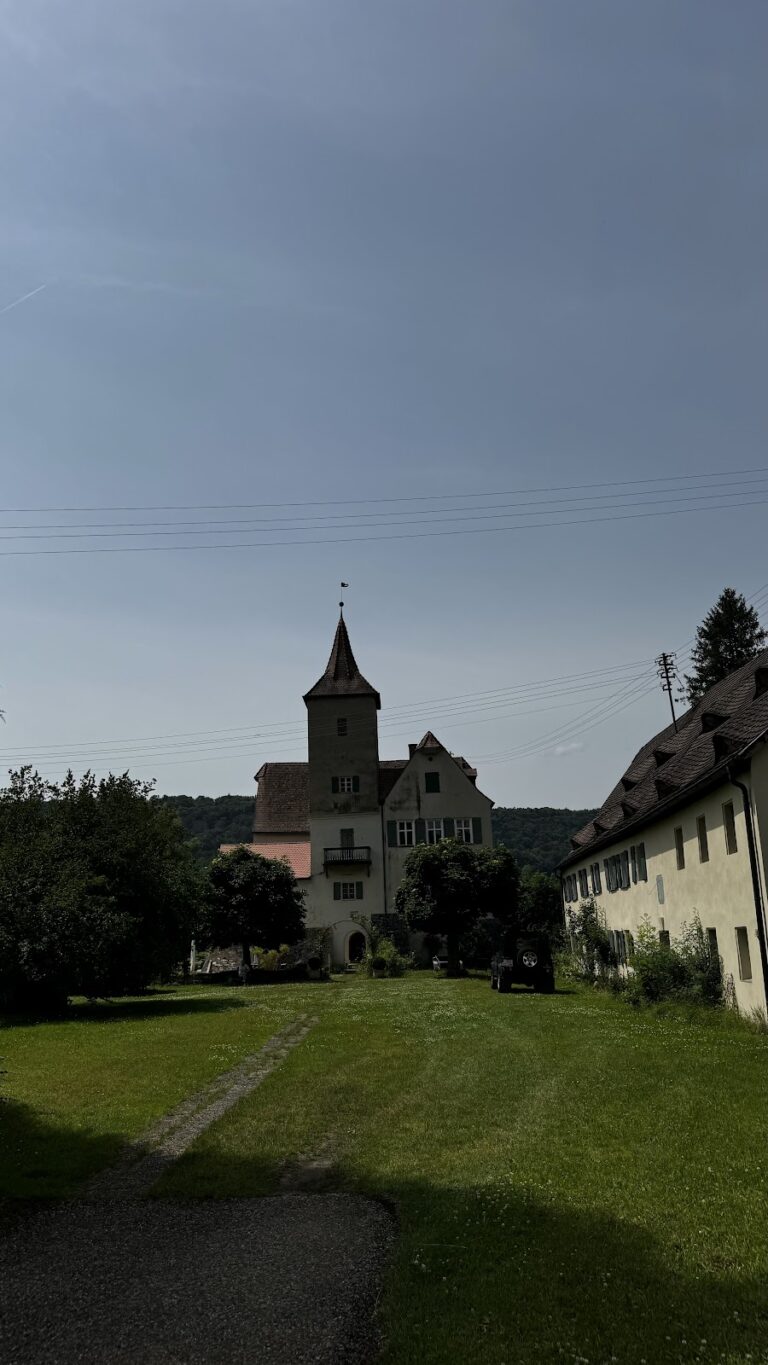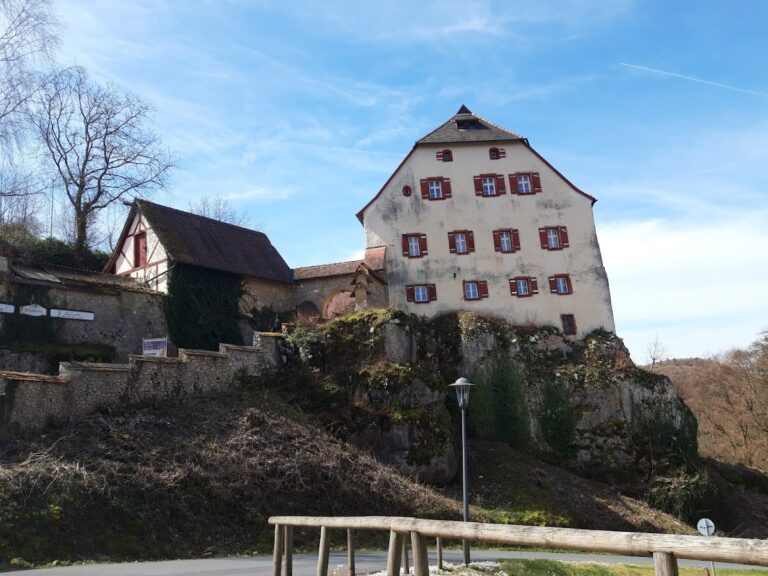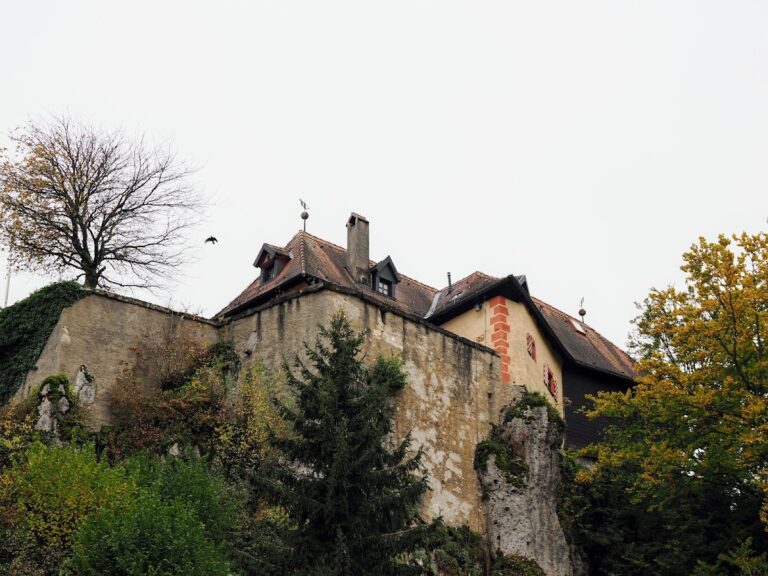Burgruine Osternohe: A Medieval Fortress in Germany
Visitor Information
Google Rating: 4.3
Popularity: Very Low
Google Maps: View on Google Maps
Country: Germany
Civilization: Unclassified
Remains: Military
History
Burgruine Osternohe is situated on a hill above the village of Osternohe, near Schnaittach in Germany. This fortress was constructed during the High Middle Ages by local nobility connected to the Holy Roman Empire.
The castle first appears in records dating to 1169 alongside the noble Poppo de Osternahe. It remains uncertain whether the family lived in the hilltop fortress at that time or on a nearby lowland motte castle. By 1228, the castle is mentioned by name in a document confirmed by King Heinrich VII, referred to as “castrum Osternach.” The Osternohe family belonged to the upper ranks of imperial ministerials—administrative knights serving the emperor. Among them, Poppo IV. stands out for his involvement in important military and religious events: he joined the 1229 crusade led by Emperor Frederick II, fought in the 1241 Battle of Liegnitz against Mongol forces, and was Grand Master of the Teutonic Order between 1253 and 1257.
In 1254, the castle changed ownership when Engelhard de Osterna sold it to Gottfried von Hohenlohe. Through the early 1300s, the castle became linked to the Neidunge family and a steward, or Vogt, named Wolfram von Osternohe. By 1354, a burgrave’s Vogt was recorded here, marking the site’s function as a center of local administration under noble authority. From 1385, the castle served as a burgravial seat, overseeing certain legal and fiscal duties, and starting in 1427, it operated as a margravial administrative center.
Military conflict affected the castle during the First Margrave War in 1450 when troops from Nuremberg burned the outer bailey, the lower defensive courtyard. Restoration followed beginning in 1457 under Hans von Egloffstein, a margravial bailiff who resided at the castle into the 1470s. The Second Margrave War brought further hardship in 1553 when mercenaries working for Nuremberg plundered the fortress and set it on fire. By 1573, it was rebuilt and remained a margravial administrative hub until 1722.
After 1722, the castle’s administrative office was dissolved in 1766 and merged with the Oberamt Pegnitz, signaling the end of its official role. At this time, the building was already uninhabitable, leading to gradual ruin. A lightning strike after 1766 damaged the bergfried, the castle’s main tower, and local inhabitants quarried stones from the remains for other constructions. In 1816, Johann Christoph Stierlein created a detailed map of the castle ruins, documenting its form. Efforts to demolish the ruin in the early 19th century were prevented by Hellmut Kunstmann. Later, in 1968, the bergfried was restored, although altered from its original five-sided shape to a squared tower stump. Today, much of the castle remains in decay.
Remains
Burgruine Osternohe crowns a rocky hilltop at about 515 meters elevation, oriented southwest on a spur of the Schlossberg ridge. The fortress is divided into an upper and a lower castle area. The lower portion is mostly privately owned and not accessible, while the upper castle remains open and serves as a vantage point.
Construction features prominently include the bergfried, or main tower, which historical images from 1773 show with large ashlar blocks forming its outer wall. These finely cut stone blocks indicate construction around the year 1200. The bergfried originally had a rare pentagonal plan, a form not common among medieval towers, but during the 1968 restoration, its shape was altered to a simpler square tower stump.
The castle’s position places it within a network of other medieval fortifications. Nearby sites include Burg Hohenstein to the east and the former castles of Riegelstein, Spies, and Wildenfels to the north. To the west and southwest lie the castle sites of Hienberg and Alter Rothenberg. About four kilometers south sits the fortress Rothenberg. This concentration reflects the strategic importance of the region during the Middle Ages.
While much of the original structure has decayed through time, the vestiges of the bergfried and the outlines of the upper castle survive, preserving the layered history of this medieval hill fortress. The lower castle area’s condition and features remain largely undocumented due to restricted access. The bergfried remains the most architecturally significant element, standing as a testament to the castle’s high medieval origins and its role in regional administration and defense.







